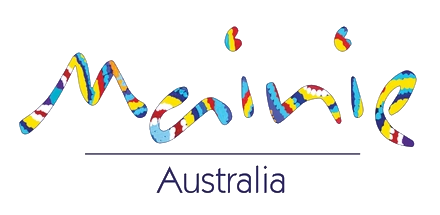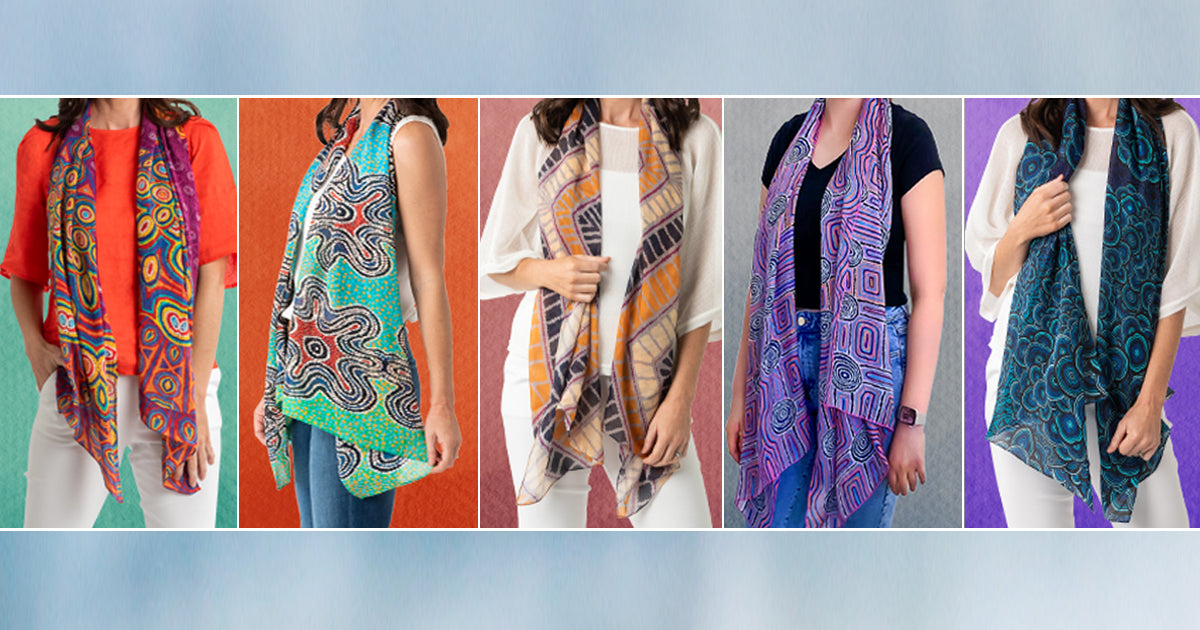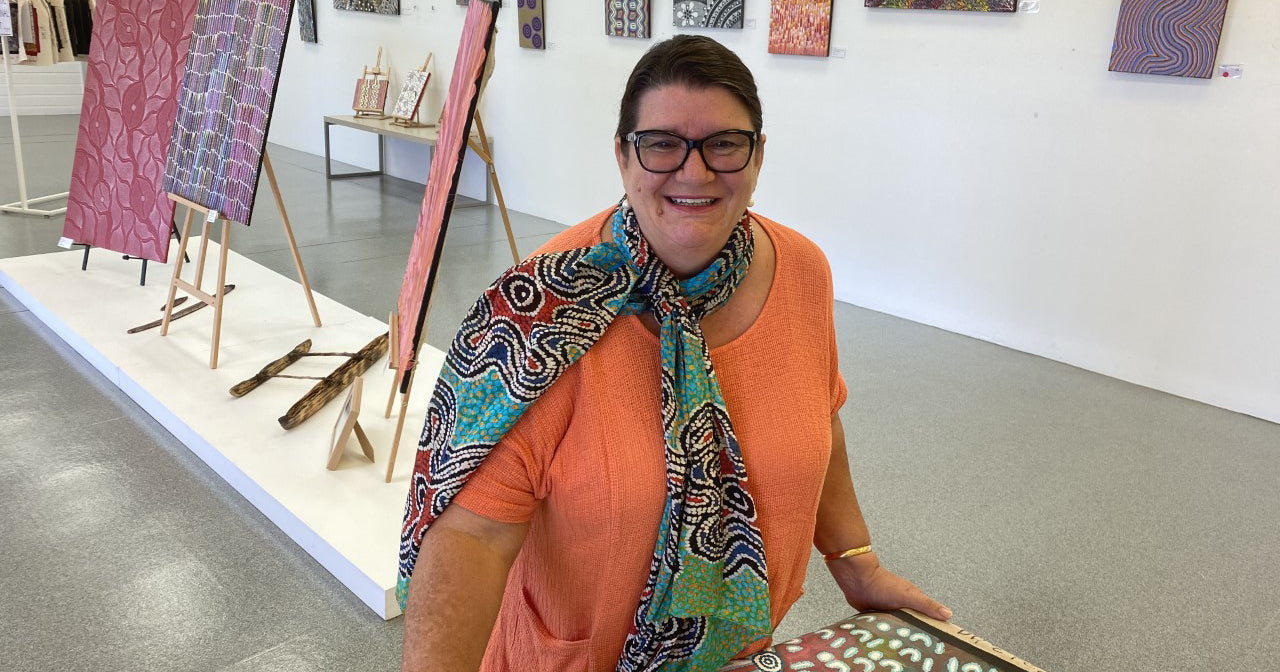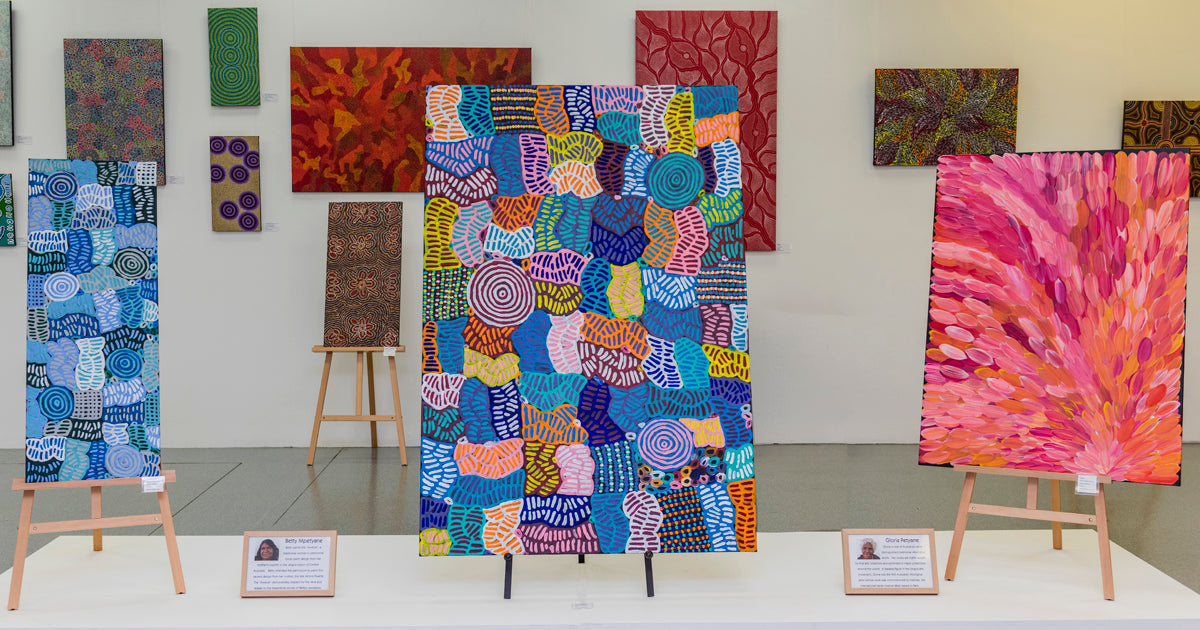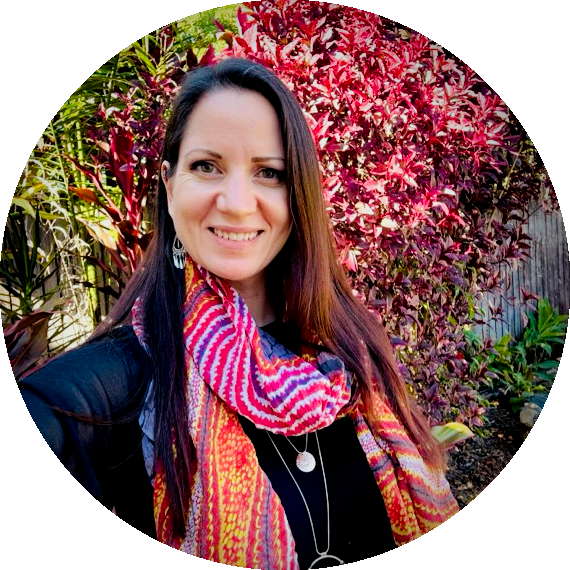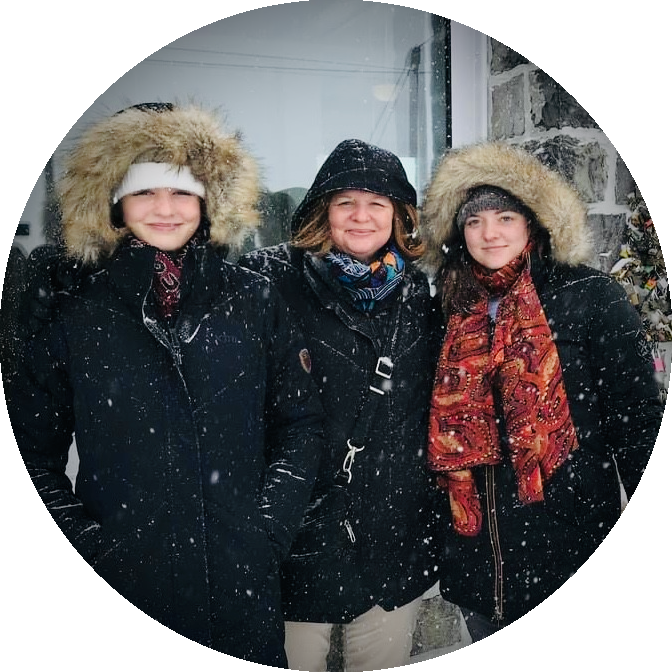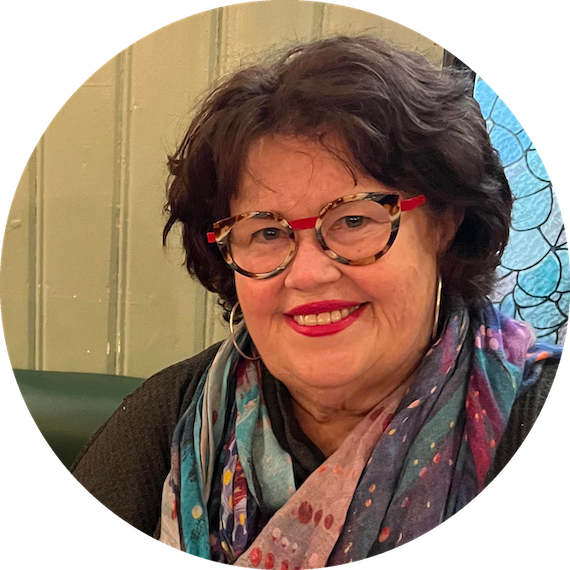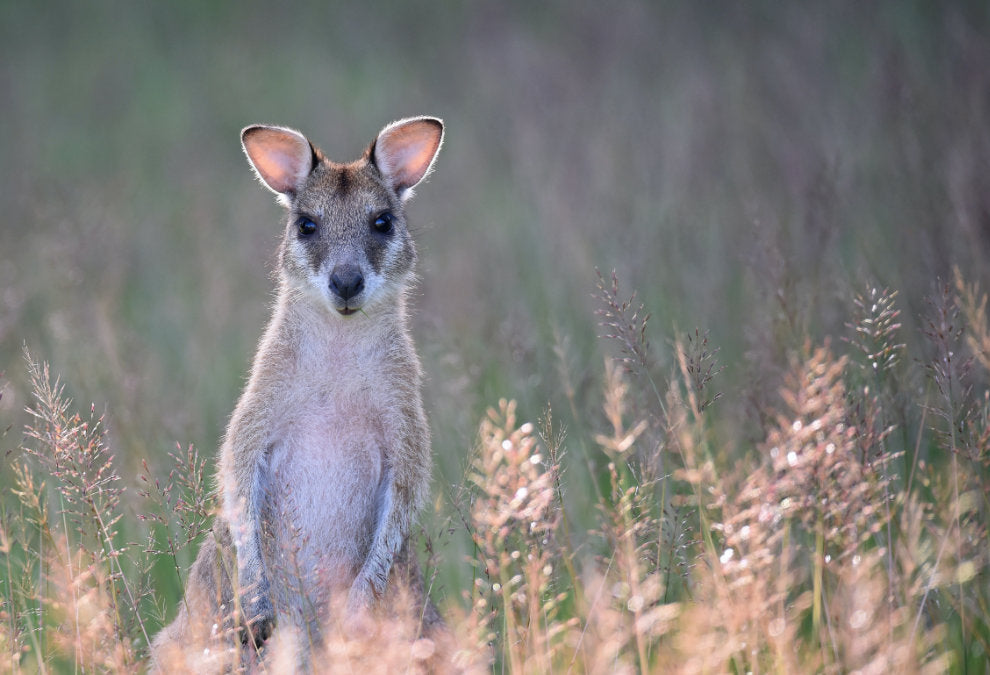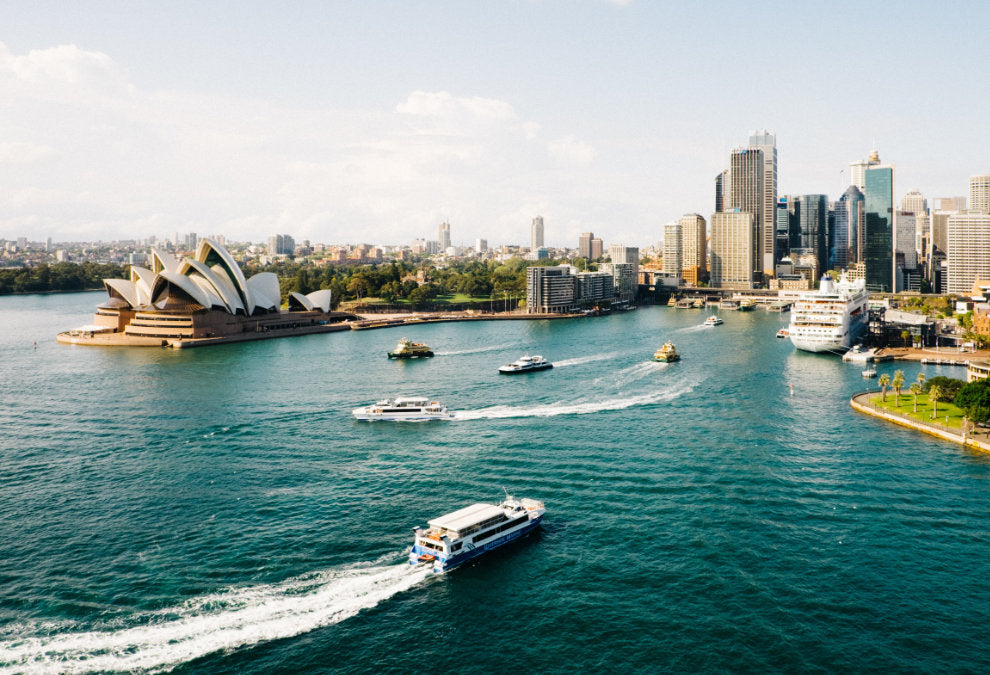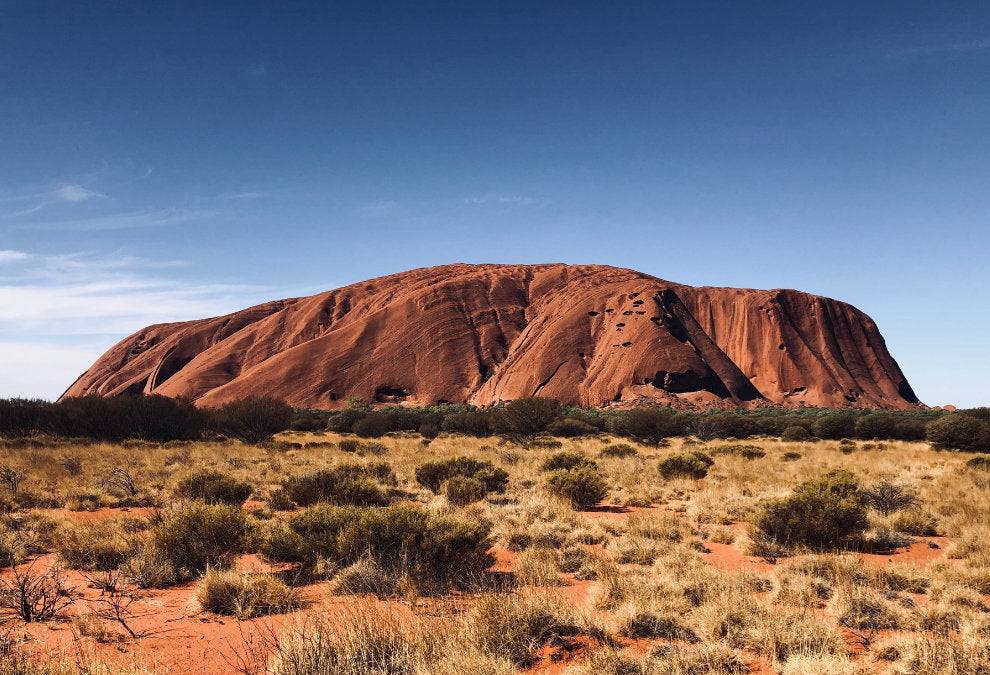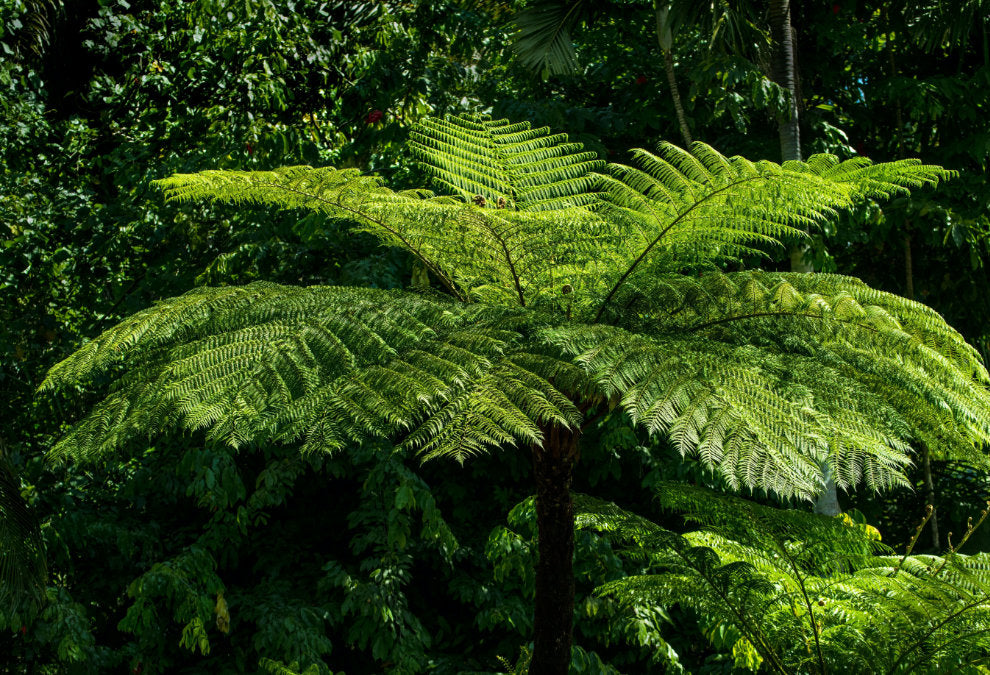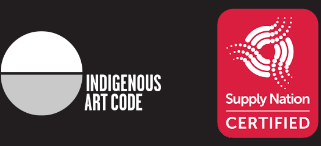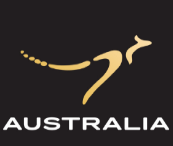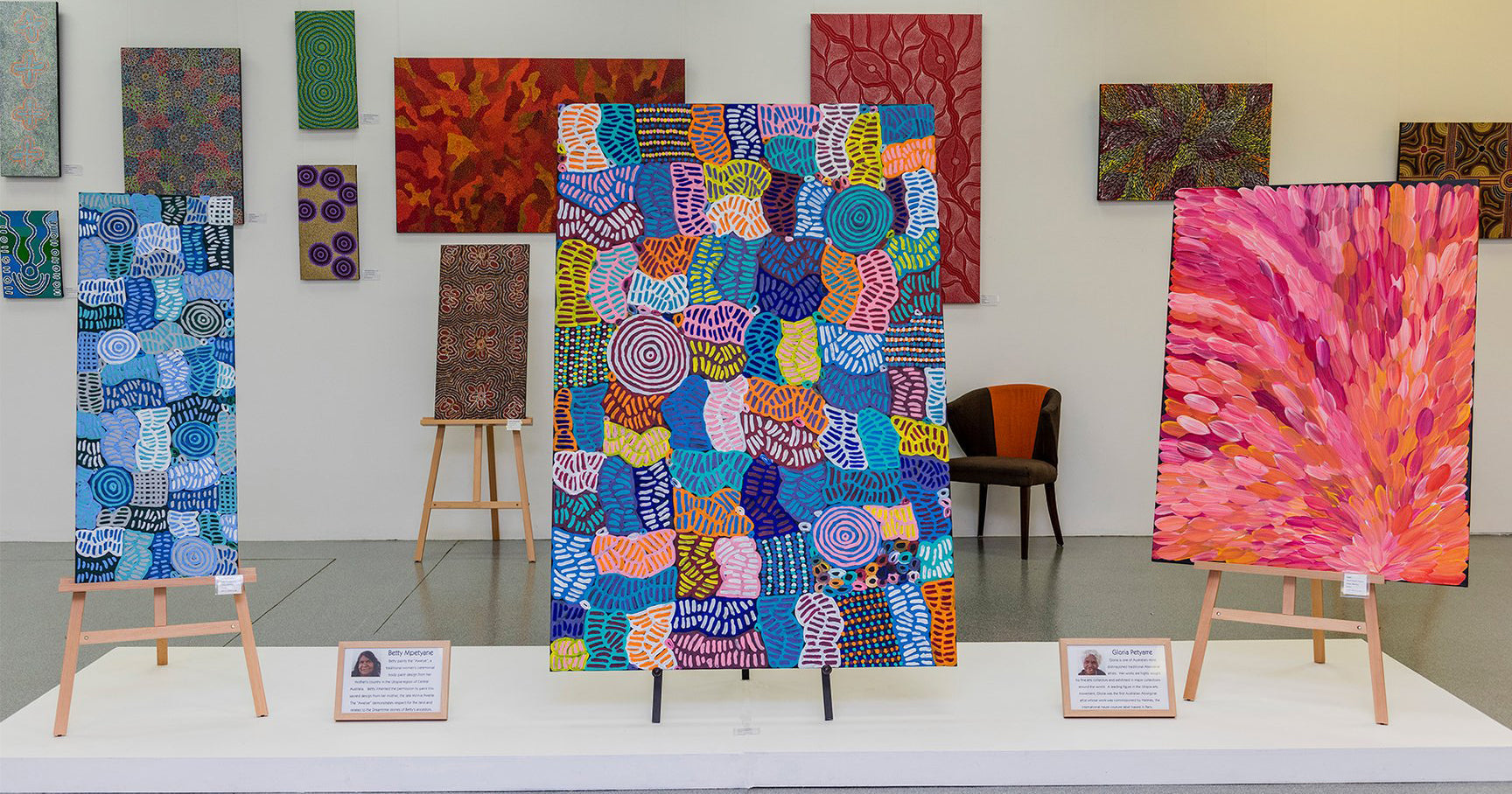
How to choose Aboriginal Art as an Investment
Authentic Aboriginal artworks from Central Australia at the Mainie Aboriginal Art Gallery in Cairns
International interest in Australia’s 60,000-year-old Aboriginal arts heritage has increased significantly over the past few years. Investors from around the world are becoming increasingly aware that artworks created by traditional Aboriginal artists represent a unique and unbroken link to a prehistoric culture that dates back to the Palaeolithic era.
In parts of northern Australia, especially in the remote desert regions of the Northern Territory and Western Australia, Aboriginal tribespeople were still making their first encounters with white people on their country as recently as the 1980s.
Even today in many desert communities, the Aboriginal people have little contact with the outside world. They continue to live on their traditional homelands and live much as their ancestors did tens of thousands of years ago. The desert people still speak their own native languages and maintain a strong connection to the spiritual beliefs and time-honoured customs of their forebears.
In some of the most isolated desert regions, community arts centres have been established by Aboriginal artist cooperatives as a means of preserving their age-old cultural heritage for future generations. These arts centres are well known to collectors from all over the globe, and now supply Aboriginal fine arts to major international exhibitions and leading auction houses like Sotheby’s and Christie’s.
There is no question that Aboriginal art is an assured investment. A decreasing supply of properly authenticated artworks and a growing demand from serious art investors will inevitably drive substantial increases in the value of paintings, particularly those created by older, traditional Aboriginal artists.
There are five simple tips to making the right investment in Aboriginal art.
1. Is the artist collectible?
Before you purchase an Aboriginal artwork as an investment, it is well worth doing some research about the current market. A good way to start is to look online for recent catalogues from Sotheby’s and Christies and other major art auction houses to learn more about the most notable arts regions and the artists’ names which attract the attention of serious collectors. Art auctions deal with works of arts worth thousands, if not tens of thousands, or even hundreds of thousands of dollars. You may not be able to afford to start your Aboriginal art collection with a painting by the late Emily Kame Kngwarreye, from the Utopia region in the Central Desert, whose seminal work, “Earth’s Creation” sold for a record A$2.1 million in 2017, but works by other Utopia artists are still highly sought after by collectors and are very affordable in comparison. Other collectible names synonymous with Utopia include Pwerle, Mpetyane, Petyarre and Kemarre. There are also many well-known desert arts communities including Papunya, Yuendumu, Kintore, Balgo and Warmun.
2. Is the price right?
Art auctions are a great way to acquire investment pieces at a realistic price, as they provide a true indication of the market value of paintings. However, if you can’t make it to an auction, the next best way to choose the right painting is to visit your local Aboriginal art gallery. The main benefit to buying from a local gallery is that you can take your time to decide which is the right piece of art for you without the hustle of trying to keep ahead of competing bids at an auction. At a gallery you can get a close look at what you are buying and have the expert knowledge of gallery staff ready at hand to answer any questions you may have about the artist or the meaning of the story depicted on the canvas. One of the most distinctive features of Aboriginal art from Central Australia is the use of intricate patterns of dots and lines by the artists to create a pictorial representation of an ancient Dreamtime story, which has been handed down to them through many generations of their ancestors over tens of thousands of years. At the Mainie Aboriginal Art Gallery, we have a wide selection of ethically acquired artworks by distinguished artists which range from under $200 upwards to many thousands. The price tag is typically determined by the size and composition of the artwork. Larger pieces with a high level of detail usually fetch a higher price than smaller and simpler canvases. However, another price determinant for a painting can be the age of the Aboriginal artist. Works by older, traditional artists will achieve higher prices. These prices will often increase again quite significantly after the artist passes away and collectors become aware that the supply of new artworks by that particular artist has ceased forever.
3. Is the seller able to provide the artwork provenance and a certificate of authenticity?
Another benefit to buying an Aboriginal artwork from a reputable specialist gallery is that you will be provided with documentation which verifies the history of the artwork. The documentation will usually include a Certificate of Authenticity from the arts centre where the artist originally created the artwork. Other records could include photographs of the artist with the artwork, the artist’s biography with details about his or her tribal or language group, a chronology of exhibitions where the artist’s works has been previously been shown, and most helpfully, an explanation of the traditional Dreamtime story depicted in the artwork. After purchasing the artwork, this documentation including the sales invoice should be kept in a safe place. Unfortunately, there is a brisk trade in fake and stolen Aboriginal art and it is almost impossible to re-sell an Aboriginal artwork through conventional channels without acceptable evidence proving that the artwork was ethically acquired. Another assurance you will receive when you purchase art from an established art centre is that the Aboriginal artist has been provided with the best materials, such as the canvas and paints, to create their work. Renowned Aboriginal arts centres supply highly valuable works to major galleries and museums all over the world. The high-quality canvases are properly prepared right from the start and the finished artworks are guaranteed to last.
4. Is the seller approved by a recognised Aboriginal art industry representative body?
The Mainie Aboriginal Art Gallery is an approved Dealer Member of the Indigenous Art Code. The Code promotes the fair and ethical trade in works of art by Aboriginal artists. It was developed in the first instance by the National Association for the Visual Arts (NAVA) and then by the Australia Council for the Arts, who worked closely with an industry alliance group made up of artists, Indigenous art centres, commercial art galleries, public art galleries, auction houses and visual arts peak bodies.
The purpose of the Code is to establish standards for dealings between art dealers and Aboriginal artists to ensure:
- fair and ethical trade in artwork;
- transparency in the process of promotion and sale of artwork; and
- that disputes arising under the Code are dealt with efficiently and fairly.
The Indigenous Art Code sets the standards of conduct for those involved in the trade of Aboriginal art to ensure that they act fairly, honestly, professionally and in good conscience at all times when dealing with Aboriginal artists. When you buy an Aboriginal painting from an approved Dealer Member of the Indigenous Art Code, you can be assured that the artwork has been ethically acquired and the artist received fair compensation for their work.
5. Do you like it?
Finally, you are standing in a gallery in front of an authentic Aboriginal painting which has caught your eye. You have done your research and know that the work is by an artist with an impressive and proven ancestral lineage. The artwork is within your set budget and represents good value for money in today’s market. The art dealer is a member of the Indigenous Art Code and can provide all the necessary documentation including a Certificate of Authenticity. There is only one thing left for you to consider. Do you like it? It is not enough that you are satisfied that the artwork represents a solid investment, it has to “speak” to you? Are you intrigued and pleased by the composition of patterns, colours and textures? Is the story depicted in the artwork meaningful to you personally? Can you imagine the artwork in the perfect space on a wall in your home or business? Look at your painting closely and from a distance. Take your time to make a decision as you would with any investment. If need be, seek a second opinion from someone whose judgment you respect. When you are sure you have found the right painting for you, buy it with confidence and hang it on your wall for all to admire for many years to come.
For more information about Aboriginal art, please visit our Mainie Aboriginal Art Gallery in Cairns or our website at mainie.com
Posted by Charmaine Saunders 'Mainie'
